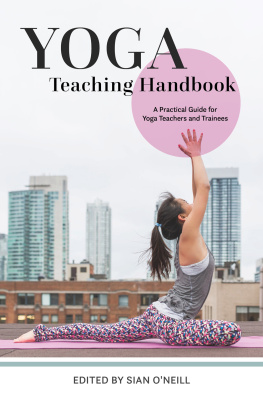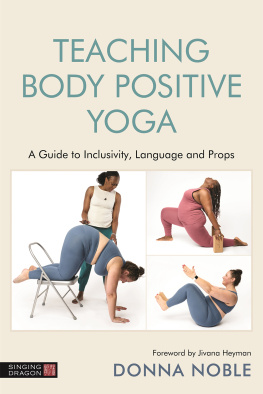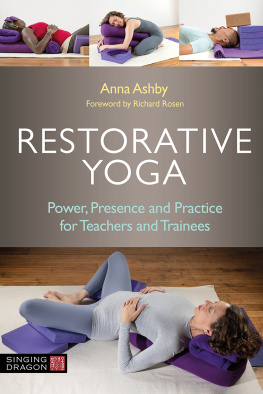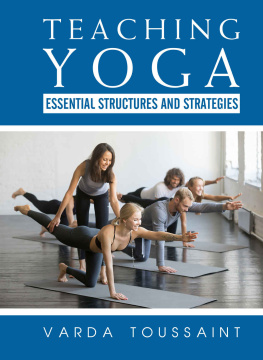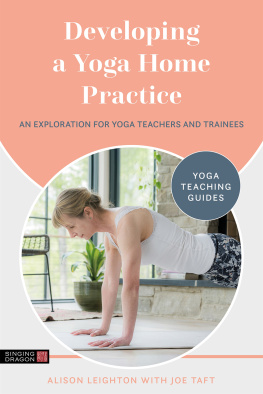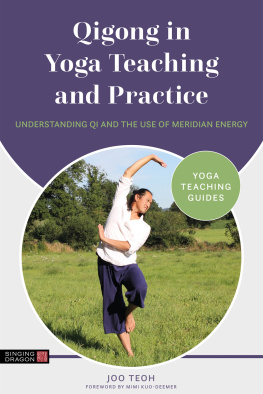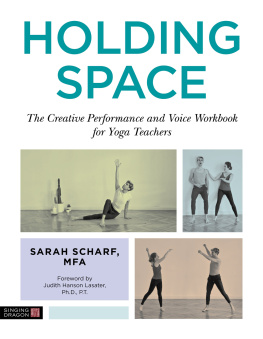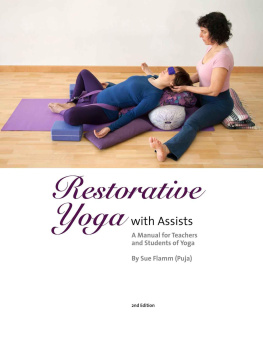
Yoga
Teaching
Handbook
A Practical Guide for Yoga
Teachers and Trainees
Edited by Sian ONeill

LONDON AND PHILADELPHIA
Contents
Introduction
Sian ONeill
The idea for this book came when I was sitting in a caf with a blank piece of paper, a coffee and a pen. I was experimenting with disconnecting from the internet and social media; phone to one side. I realised that what I would find really useful is a practical book on teaching yoga including tips and lessons learned from experienced teachers. Yoga teachers generally like yoga books. There are not many texts, however, on the practicalities of running your yoga business, large or small. This book is an attempt to meet that need. We have been fortunate enough to assemble a panel of some of the worlds best-known and loved teachers. Every one of our contributors is a highly experienced yoga teacher and I am so grateful to them for sharing their knowledge and experience.
Yoga is more popular than ever with many also choosing the path of teaching yoga. It is a privilege to teach yoga, but as anyone who is already teaching or contemplating teaching yoga knows, it also comes with its own set of challenges and responsibilities. How do you come up with new and creative sequences each week? How do you safely incorporate students with injuries without overstepping boundaries? And for those of you thinking of expanding your yoga business to run retreats, how do you plan a safe and enjoyable retreat, from which students return refreshed, without burning out yourself? Our contributors address these and many other issues I hope you take away some practical gems.
I write this having recently returned from the British Wheel of Yoga Annual Congress, the theme for which this year was transformation. The congress caused me to reflect on how yoga has changed me from that first blissful feeling in Savasana to the recognition that yoga has changed both me and my relationship with the world. It is this, I think, that is so powerful about teaching yoga: the potential to affect peoples lives so positively. Perhaps it is the under-confident student who is helped through yoga, someone going through a period of intense change or the student managing to carve out that precious hour or so of yoga amidst a super-hectic schedule. We know that everyone who turns up in class has prioritised yoga over all the other possible options in a commitment to their wellbeing. Yoga offers this amazing toolkit to help us and our students through the vagaries of life with all of its ups and downs.
Rather than attempting to summarise the chapters that follow, I shall let the contributions speak for themselves. If there is one theme, though, that is repeated in different chapters and in conversations with contributing teachers, it is around intention and knowing why you are teaching yoga. What is it that has led you to want to teach? And what is it that you want to offer students? Each of us will have a different answer to these questions, which will inform how we shape our yoga teaching path.
I know that I have learned a great deal in putting this book together. I hope you also find something similarly useful inside to support your own yoga teaching career. Happy reading!

I would like to thank all of our contributors for their time, commitment and thoughtful chapters. Special thanks are also owed to Sarah Hamlin at Jessica Kingsley Publishers for her professionalism, support and thoughtful input, to Victoria Peters and Sophie Raoufi, and also to Jessica Kingsley herself for believing in and supporting the idea from the start. Last and not least, thank you to Alex.
).
A note on transliteration
In transliterating Sanskrit words into Western script, we have followed the convention of the International Alphabet of Sanskrit Transliteration (IAST) (except for words such as vinyasa that have found their way into the Oxford English Dictionary, where we have used the common English form without diacritical markings). There are numerous guides to the correct pronunciation of transliterated Sanskrit words available online. Sanskrit nouns have been rendered in their base form without declension, irrespective of their function in the sentence. Accordingly, although the plural of Sanskrit nouns is not technically formed with the suffix -s , we have followed the widespread practice in English language texts of showing plurals by the addition of -s , to the base form of the noun.
Influence and Evolution
Lizzie Lasater
The ethics of teaching yoga amidst the shifting mediums of our profession.
In the last hundred years, the profession of yoga teacher has undergone substantial transnational and cultural transformations. In this rela-tively short span of time, I can trace my lineage and my influence from one-on-one mentorship in India with Krishnamacharya, to co-ed group classes with BKS Iyengar, to mixed-style commercial studios like YogaWorks in Los Angeles, to digital learning platforms like YogaGlo.
To borrow conceptually from the modernist philosopher, Marshall McLuhan, this transformation indicates a shift in the medium of transmission. Doesnt it therefore follow that the message itself has also changed? In other words, as we teach yoga differently, does what we teach also change? When I think about practicing and teaching yoga as a woman in the West, conflicts and questions arise about authenticity, ownership, orientalism, and ethics.
If we acknowledge that an evolution in both medium and message is underway, my question becomes: what does it mean to be a professional yoga teacher today? How can we best support our students to find silence in the midst of our cacophonous 21st century? How do we make space for the unseen inner work of yoga in a culture ever more mesmerized by materiality and consumerism? And how can we personally integrate a profession about slowing down into our accelerating lives?
In short, how can we honor the wisdom of the past while unabashedly living in the evolving present? An alternative title of this chapter might have been: Can we teach samdhi on social media?
My answer is to create an intention. I hope that our professional conduct can, in and of itself, facilitate a deepening of our personal yoga practice. The dream is to establish a dynamic of integration so that it becomes possible for our work to feed our practice and our practice to feed our work, thus ultimately enhancing our lives.
What follows is my personal manifesto: eight points on the ethics of teaching amidst the shifting mediums of our profession.
At the end of each class, my mom, Judith Hanson Lasater, says, May we live like the lotus, at home in the muddy water. Ive adopted this saying when I teach as well partially as an homage to my lineage, but also because I like its honesty. I like the open acknowledgement that our life and our practice are muddy, but this bittersweetness is precisely what makes them rich.
My practice is at the heart of my teaching
When we moved into our current apartment, it was partially furnished with many attractive, mid-century modern pieces. My architect husband wanted to keep them all. But I insisted on moving half of the furniture out to make space for yoga. Thats exactly what I kept saying: I need empty space to practice yoga.
This physical space is a symbol for the mental, emotional, and psychological space that yoga practice both requires and creates. I sometimes think of my home practice as a controlled environment to experience emptiness. It is a way that I have found to step into the unknown each day by creating a fence around an open field.
Next page
